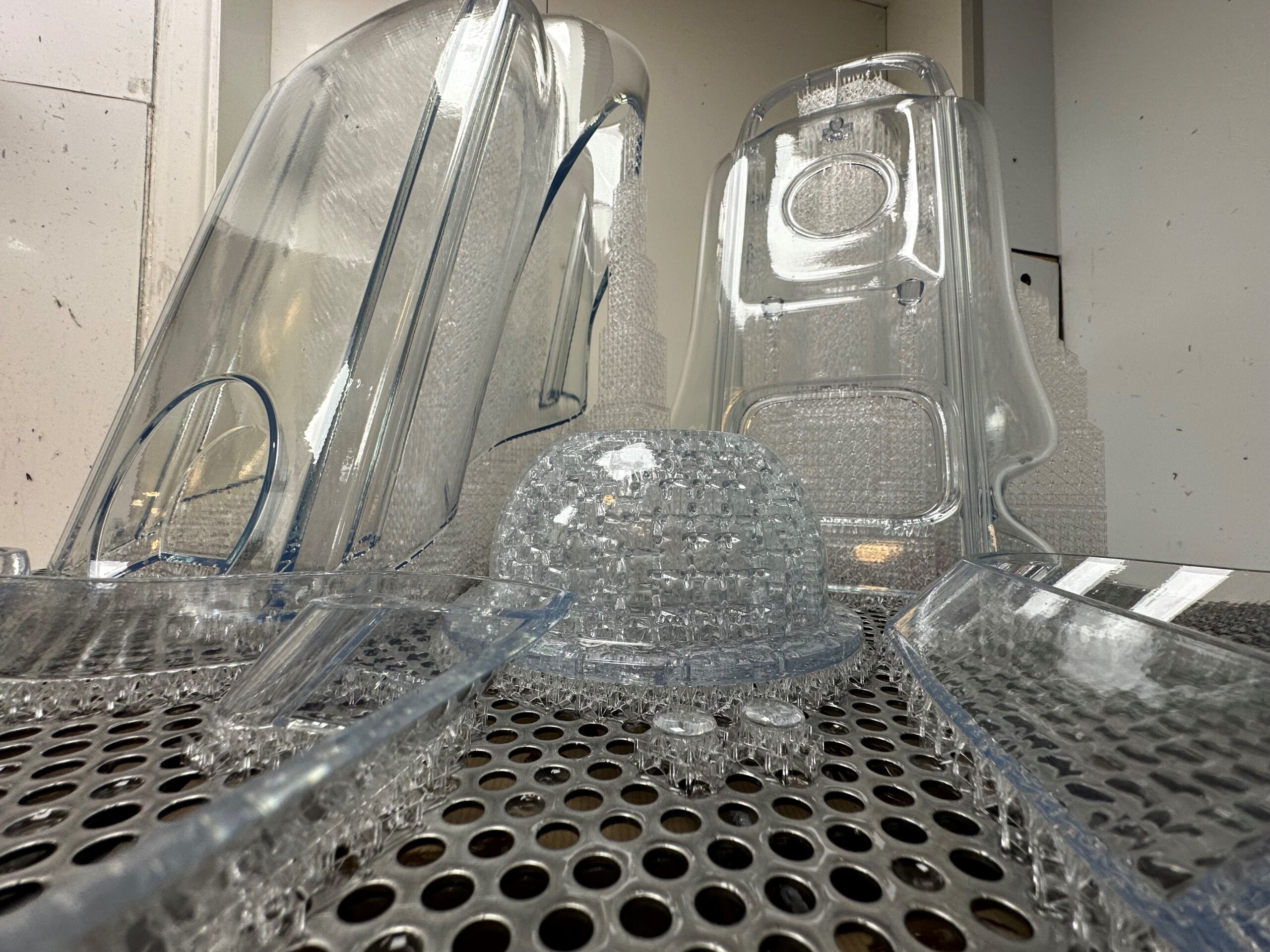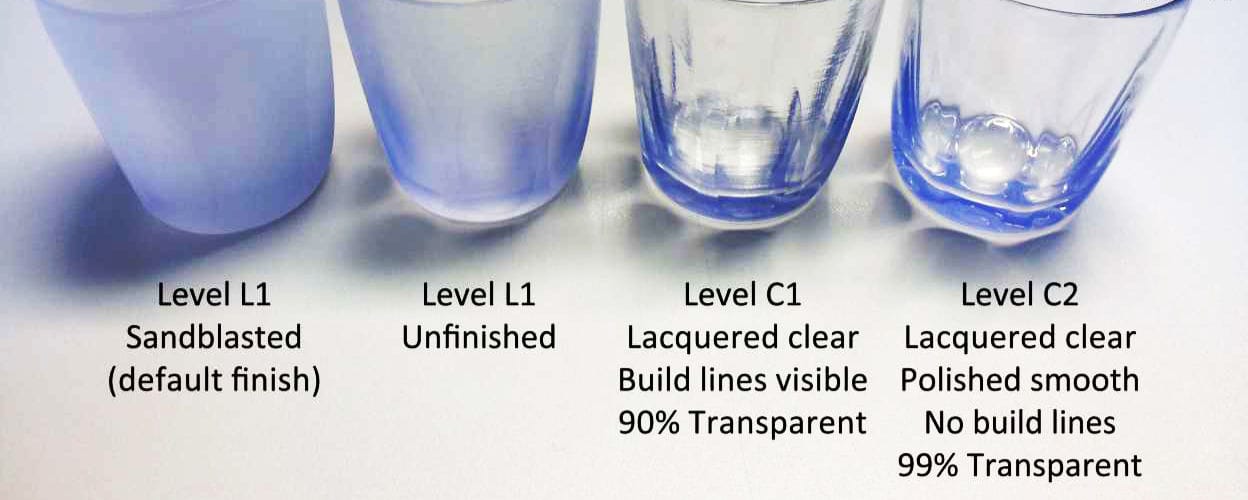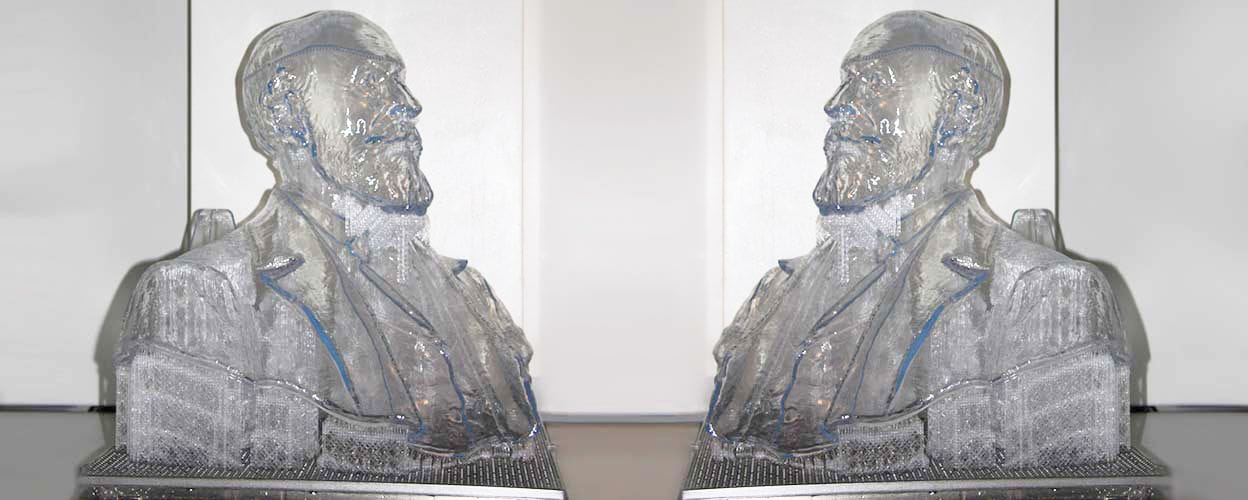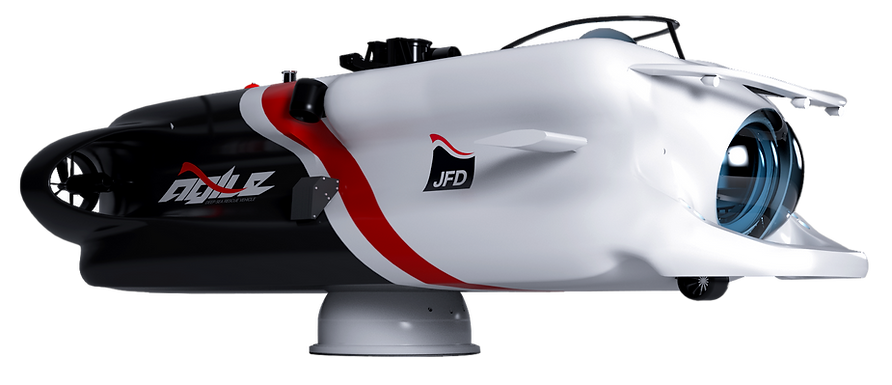SLA 3D Printing Service
SLA, or Stereolithography, is a type of 3D printing technology that uses a light source (typically a laser) to cure liquid resin layer by layer, solidifying it into a desired 3D object.
Two of the UK’s largest 3D printers
Custom parts delivered in days
Ideal for low volume production and rapid prototyping
Get Your Quick & Easy Project Quote Today
Benefits of SLA Printing
Smooth Surface Finish
SLA prints have a smooth surface finish that requires minimal post-processing. This is because the resin is cured layer by layer, resulting in a seamless finish. We can also sand, paint and tint 3D models.High Resolution
With a scanning resolution of within 1 micron, SLA parts are highly accurate. The Ultra Hi-res mode utilises the lasers extremely small spot size of just 0.075mm.Complex Geometrics
SLA printing can create complex geometries that would be difficult or impossible to produce with other 3D printing methods. This is because the laser can cure the resin in any shape, creating intricate details.Various Options
There is a wide variety of resins available for SLA printing, with different properties such as strength, flexibility, and biocompatibility. Our materials are extremely durable making them excellent for snap fits.Virtually Optically Clear Parts
We have mastered virtually optically clear parts from our Stereolithography machines, to help you see inside your assembly.Made in Hours
We can help with last minute projects and offer a fast turnaround. High quality SLA parts can be printed in a matter of hours.
Why Choose SLA Over Other 3D Printing Methods?
While other 3D printing technologies like SLS and FDM are excellent for specific applications, SLA excels in producing parts with the highest level of detail and smoothest surface finish. This makes it the go-to choice for visual prototypes, master patterns for casting, and end-use parts where aesthetics and precision are critical. Unlike FDM, which can leave visible layer lines, SLA’s liquid resin process ensures a seamless, smooth exterior right off the printer, drastically reducing the need for extensive post-processing. When your project demands high-resolution features and a stunning finish, SLA 3D printing is the superior solution.
SLA 3D Printing Applications
SLA 3D printing has many applications including:
Transparent 3D Printed Parts including lenses and light-guides
Masters for vacuum casting
Functional assemblies: Creating multi-part prototypes and end-use components.
End-Use Parts: In some cases, SLA can be used for low-volume manufacturing of functional parts.
Wind tunnel models
Creating functional prototypes and pre-production parts for design validation before mass manufacturing
Consumer Goods Prototypes: For form, fit, and function testing of new product designs, such as packaging, toys, or household items.
Complex Enclosures and Housings: For electronic equipment or consumer products requiring intricate shapes and smooth aesthetics.
Aerospace Components (Prototyping): Producing complex shapes for wind tunnel testing or initial fit checks of interior parts
Automotive Styling Models: Creating large, smooth exterior and interior components for design evaluation. patterns
Design evaluation models
Clear Flow analysis models
The Advantage of Large Format SLA Printing
When your project demands size and precision, our large format SLA 3D printers are the answer. With two of the UK’s largest 3D printers, we can produce exceptionally large, single-piece parts that other providers would have to cut and bond. This capability not only saves you time and money but also results in a stronger, more accurate part with a seamless finish. Our large SLA machines are ideal for manufacturing large models, aerospace components, and large-scale Automotive parts like grilles, bumpers, engine housings, delivering intricate detail across an expansive build area.
Get a Quote for SLA Parts
Getting a quote for SLA printed parts is easy! Simply upload your 3D model file and receive a quote in minutes. We can also help with CAD drawings.
Our SLA Machines & Materials
We operate a comprehensive suite of SLA 3D printing machines, enabling us to handle projects of all sizes and complexities with exceptional quality. This ensures we can select the perfect machine for your specific needs, whether you require a small, highly intricate component or a large multi-part assembly.
Our diverse range of machines allows us to build parts quicker and more efficiently, streamlining the entire production process from printing to finishing. This flexibility, combined with our decades of expertise, allows us to provide a cost-effective solution without compromising on detail or accuracy.
For materials, we utilise industry-leading resins to meet a wide array of project requirements. We offer Somos Watershed, known for its water-resistant properties and durability, and Somos Taurus, which is ideal for demanding applications requiring strength and high temperature resistance.

SLA for Large Parts
MNL boasts two of the UK’s largest resin 3D printers, producing exceptional quality large parts with super-fast turnaround times. Our NEO800 systems offer intricate detail and smooth sidewalls thanks to 1-micron scanning resolution and a variable spot-size laser. The spot-size laser goes small for intricate detail on the boundaries of parts and then it goes larger for filling in the rest of the section. As a result, we can produce intricate parts and reduce finishing times by up to 50%.Why Malcolm Nicholls?
UK Based
With headquarters in the Midlands, we can deliver your 3D parts nationally.
Years of Expertise
We are a family run business with decades of experience.
Finished to Perfection
A team of traditional model makers in house to give your 3D print the wow factor.
More Than Just 3D Printing
With our suite of machines and technology we also specialise in low-volume manufacturing, Vacuum Casting, CNC Machining and more.
Virtually optically clear SLA 3D printed parts?
Our team of 3D printing experts have mastered virtually optically clear parts from our Stereolithography machines, we can help you see inside your assembly, utilised by many of our clients for flow testing and analysis as well as replicating glass for many designs. Glass like SLAs can be achieved with MNL not just for lenses and lighting based components.

Post Processing & Finishing
Post-processing your SLA is critical to get the most out of your 3d print. This multi-step process involves removing excess resin, curing the part for optimal strength, and potentially sanding and finishing for a desired aesthetic. Depending on your desired outcome, we offer various finishing techniques, like painting or polishing, and we can personalise your creation for specific applications.Want to know more about our SLA 3D printing service?
Stereolithography services at MNL are some of the most precise in the industry thanks to our top-of-the-line SLA machines. If you are in need of stereolithography prototyping or small production batches quickly and at an affordable cost, then our SLA prototyping services are perfect for you.

650mm Wide Size Bust on a Large SLA Printer

Wind Tunnel Model for High Speed Aerodynamic Testing
Trusted by Industry Leaders
We have experience creating exceptional 3D printed parts for leaders across various industries. From automotive and aerospace to point of sale and packaging, we can help.
Which 3D Printing Service do I need?
Learn more about the different options we offer.
SLA
Stereolithography (SLA) also often referred to as SLA is the most widely used resin 3D printing technology. it is generally considered to provide the greatest accuracy and best surface finish of any prototyping or 3D printing process.SLS
SLS can build functional parts, casting patterns and tooling inserts from your 3D CAD data. Our HiQ Sinterstation system (SLS 3D Printing machine) represents the future of Instant Manufacturing Technology.FDM
Manufacturing FDM known as fused deposition modelling is the most widely available form of 3d printing. It is an additive manufacturing technology that selectively deposits molten plastic to build parts layer by layer.

Order 3D Printed Parts
Getting a quote for your 3D printing project has never been easier. We offer three straightforward options to meet your needs. Option One – Perfect for those seeking a swift and hassle-free 3D printing quote. Option Two – If your project requires more than just printing, option two is your go-to choice, where we can provide quotes for CNC machining, surface finishing, vacuum forming, and vacuum casting for your 3D parts. Option Three – For large, complex, intricate, or multi-part projects, look no further than option three. Give us a call, and our team will be more than happy to assist you in bringing your vision to life. At Malcolm Nicholls Ltd, we make quoting fast, easy, and simple.Being Clear About SLA Manufacturing
Transparent 3D printed parts allow you to see inside your assembly with a clear vision of your housing. The level of transparency required will depend on your application and budget. We offer transparent 3D printing services using our SLA machines.

We’re often asked…
What is SLA 3D Printing & Stereolithography?
Stereolithography (SLA) also often referred to as SLA is the most widely used resin 3D printing technology and it is generally considered to provide the greatest accuracy and best surface finish of any prototyping or 3D printing process.
Stereolithography is an industrial 3D printing process used to create concept models, complex or even very intricate parts. It is a popular choice as many parts can be built in just a day! With MNL’s secondary finishing services such as painting and finishing we can make your part and the details within it really stand out.
How does SLA printing work?
A computer controlled UV laser beam scans across the surface of a vat of photosensitive resin that instantly turns the liquid to solid wherever it touches. Successive layers or slices of cured resin are gradually built up into a solid version of the intended CAD model until your part is complete.
Newly built parts are taken out of the SLA machine and taken into our processing room where solvents are used to remove any additional resins. The additional resin will all be removed so we can then remove any support structures manually. After the supports and all the resin has been removed the majority of parts will undergo a UV-curing cycle to fully solidify the outer surface of the part. If the part is a clear 3D printed part we will leave it to dry naturally.
The final step in the SLA 3D printing process is the application of any specified finishing touches such as metalising, painting, flocking or additional vinyls.
What does SLA mean in 3D printing?
Why choose to do your 3D printing via SLA?
Stereolithography or SLA is also an excellent choice for rapid prototyping and projects requiring the production of very accurate and finely detailed parts. Stereolithography prototyping is ideal for creating parts to demonstrate and validate concept ideas and ergonomic testing.
What steps are involved in SLA post processing?
- Washing Away Unwanted Resin: First, a bath in a solvent like isopropyl alcohol gently removes uncured resin clinging to the surface, ensuring precise details and smooth textures.
- Support Removal: Carefully removing the temporary support structures that held the part during the 3D printing process.
- Curing for Strength: Under a UV light or heat, the remaining resin undergoes a polymerisation process, transforming from a liquid state to a solid plastic, maximising your part’s durability and dimensional stability.
- Sanding and prep: If you have opted for a finished SLA (not a straight off the printer option) we will sand and prep your part. Sanding smooths out any surface imperfections
- Finishing (Optional): Depending on your desired outcome, we offer various finishing techniques, like painting or polishing, and we can personalise your creation for specific applications.
What is the difference between SLA and DLP 3D printing?
Are SLA prints stronger than FDM?
What are the drawbacks of SLA printing?
While SLA printing excels in precision and detail, parts made with it can be less robust compared to methods like FDM.
If your prototype needs to handle significant physical stress or impact, FDM might be a better choice for its durability. For early-stage, non-functional prototypes where precise details and aesthetics are paramount, SLA’s strength limitations might be acceptable.
